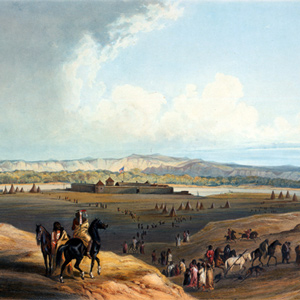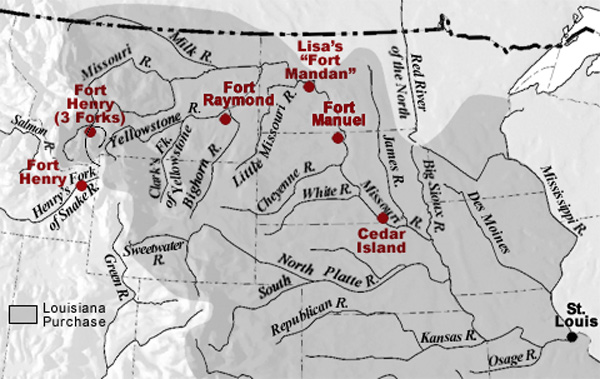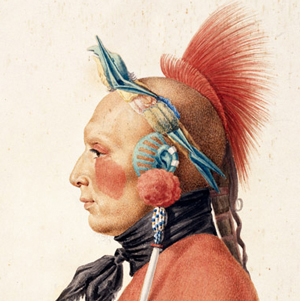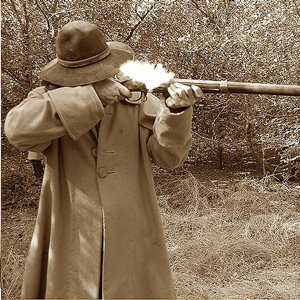After founding the Missouri Fur Company (1807-1814), in which William Clark was a participant, Lisa left St. Louis for the Upper Missouri in 1807. Pressing far upstream, he established Fort Raymond at the mouth of the Big Horn River on the Yellowstone River in present-day Montana. He returned again in 1809, building a second post above the Mandan and Hidatsa villages. He made two more trips to exploit the richness of the northern Rockies, and he dominated the upriver trade until 1820, two years before his death. His profits stimulated other parties to focus on the Missouri River but, despite much opposition, he maintained a near monopoly on the river for thirteen years.
One of Lisa’s most famous posts, Fort Manuel Lisa, was built almost astride the modern boundary between North Dakota and South Dakota. Occupied for only a few months, it was abandoned in 1812 when its residents fled back downriver, including Toussaint Charbonneau, whose Lemhi Shoshone wife Sacagawea had recently died there of “a putrid fever.”[1]John C. Luttig, Journal of a Fur-Trading Expedition on the Upper Missouri, 1812-1813, ed. Stella M. Drumm (St Louis: Missouri Historical Society, 1920), 106.
Related Pages
Fur Trade after the Expedition
by W. Raymond Wood

The Louisiana Purchase and the lure of its beaver population led to a veritable flood of traders and trappers moving toward the Upper Missouri and the Northern Rocky Mountains and the slow abandonment of the overland trade in the United States by Canadian and British interests.


Manuel Lisa’s men at Fort Raymond not only encouraged the Crows to come trade with them, but they set out parties to trap beaver on their own. It was the latter effort that led to hostilities with the Blackfeet that affected Potts, Drouillard, and Colter.
February 17, 1804
Manuel Lisa's engagés


Winter Camp at Wood River, IL In St. Louis, Clark is negotiating with trader Manuel Lisa to hire some of his French engagés. At winter camp at Wood River, Lewis records weather data.
May 3, 1804
Chouteau's Osage delegation


From St. Louis and Camp River Dubois, Lewis and Clark write letters of introduction for Pierre Chouteau who will soon take a delegation of Osage to Washington City. Trader Manuel Lisa visits Clark.
May 6, 1804
Clark's military rank


At winter camp, the expedition’s men win shooting contests with several of the country people. From St. Louis, Lewis sends Clark a commission for second lieutenant—not for captain as promised.
Notes
| ↑1 | John C. Luttig, Journal of a Fur-Trading Expedition on the Upper Missouri, 1812-1813, ed. Stella M. Drumm (St Louis: Missouri Historical Society, 1920), 106. |
|---|
